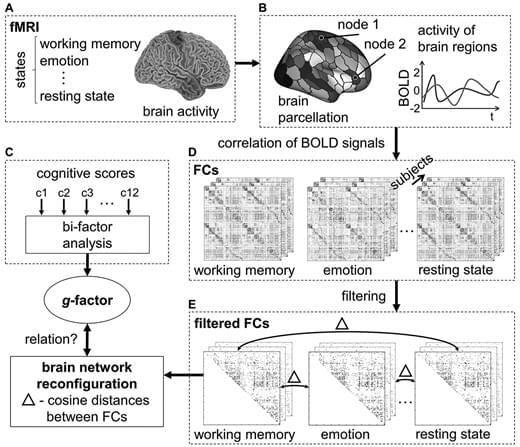A surprise assistant?


Found on Google from toonpool.com
Share your videos with friends, family, and the world.
Humans are gearing up to land and explore the Red Planet in the coming years.
This is a significant advantage as it eliminates the need to transport fuel to Mars, reducing the overall weight and complexity of the mission.

O.o!!!!
OpenAI has disrupted over 20 malicious cyber operations abusing its AI-powered chatbot, ChatGPT, for debugging and developing malware, spreading misinformation, evading detection, and conducting spear-phishing attacks.
The report, which focuses on operations since the beginning of the year, constitutes the first official confirmation that generative mainstream AI tools are used to enhance offensive cyber operations.
The first signs of such activity were reported by Proofpoint in April, who suspected TA547 (aka “Scully Spider”) of deploying an AI-written PowerShell loader for their final payload, Rhadamanthys info-stealer.
Human Immortality — If you thought Human Immortality was just a concept in science fiction, this episode reveals how it will become science fact. For some scientists featured in this program, achieving Immortality is not a question of ‘If’. The real question is ‘When?’
Human Immortality (2022)
Director: Emma Watts.
Writers: Kyle McCabe, Christopher Webb Young.
Stars: Samantha Brady, Aubrey DeGrey, Leonard Guarente.
Genre: Documentary.
Country: United States.
Language: English.
Release Date: August 31, 2022 (United States)
Synopsis:
If you thought Human Immortality was just a concept in science fiction, this episode reveals how it will become science fact. For some scientists featured in this program, achieving Immortality is not a question of ‘If’. The real question is ‘When?’
One scientist shows how she is making lab-grown organs called ‘ghost hearts’ that not only grow quickly, but that can be accepted in any host’s body without rejection—ending the agony for those waiting for organ transplants. Another biologist is looking at Immortality at the microbiological level. In his lab, he’s identified the ‘longevity gene’ (called SIR2) that can slow the ageing process, and which holds the key that will unlock our ability to better control the rate at which we age. One gerontologist is unearthing the immortal secrets of lobsters, who never stop growing and naturally live up to the astonishing age of 122 years. Inspired by how their bodies regulate cellular division, he’s developing cutting-edge medications that will boost human longevity.
Incredibly, one pioneer is creating a unique medical cocktail that can even reverse ageing. Medical techniques like these could pave the way to Human Immortality.
SUPPORT US!

This video explores what life would be like if we became a Type 3 Civilization. Watch this next video about us becoming a Type 2 civilization: • What If We Became A Type 2 Civilizati…
🎁 5 Free ChatGPT Prompts To Become a Superhuman: https://www.futurebusinesstech.com/su…
🤖 AI for Business Leaders (Udacity Program): https://bit.ly/3Qjxkmu.
☕ My Patreon: / futurebusinesstech.
➡️ Official Discord Server: / discord.
SOURCES:
• https://www.futuretimeline.net.
• The Singularity Is Near: When Humans Transcend Biology (Ray Kurzweil): https://amzn.to/3ftOhXI
• The Future of Humanity (Michio Kaku): https://amzn.to/3Gz8ffA
💡 Future Business Tech explores the future of technology and the world.
Examples of topics I cover include:
• Artificial Intelligence \& Robotics.
• Virtual and Augmented Reality.
• Brain-Computer Interfaces.
• Transhumanism.
• Genetic Engineering.
SUBSCRIBE: https://bit.ly/3geLDGO
Disclaimer:

Abstract. Intelligence describes the general cognitive ability level of a person. It is one of the most fundamental concepts in psychological science and is crucial for the effective adaption of behavior to varying environmental demands. Changing external task demands have been shown to induce reconfiguration of functional brain networks. However, whether neural reconfiguration between different tasks is associated with intelligence has not yet been investigated. We used functional magnetic resonance imaging data from 812 subjects to show that higher scores of general intelligence are related to less brain network reconfiguration between resting state and seven different task states as well as to network reconfiguration between tasks. This association holds for all functional brain networks except the motor system and replicates in two independent samples (n = 138 and n = 184). Our findings suggest that the intrinsic network architecture of individuals with higher intelligence scores is closer to the network architecture as required by various cognitive demands. Multitask brain network reconfiguration may, therefore, represent a neural reflection of the behavioral positive manifold – the essence of the concept of general intelligence. Finally, our results support neural efficiency theories of cognitive ability and reveal insights into human intelligence as an emergent property from a distributed multitask brain network.
👍 If you like WorldCam content, please hit the Like, Subscribe and even leave a comment for more great content. Thank you!
– — – — – — – — – — – — – — – -
Starship’s fifth flight test could launch as soon as October 13, pending regulatory approval.
The launch window will open as early as 7:00 a.m. CT. As is the case with all developmental testing, the schedule is dynamic and likely to change, so be sure to stay tuned to our X account for updates.
Starship will aim to take another step towards full and rapid reusability. The primary objectives will be attempting the first ever return to launch site and catch of the Super Heavy booster and another Starship reentry and landing burn, aiming for an on-target splashdown of Starship in the Indian Ocean.
Credit: SpaceX
– — – — – — – — – — – — – — – -
Check out other LIVE streams — / @worldcamlive.
Please consider becoming a member to support us: